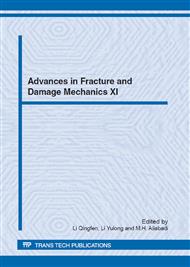p.21
p.25
p.29
p.33
p.37
p.41
p.45
p.49
p.53
Influence of Finite Element Modeling Choices in the Assessment of Stress Concentrations at Fatigue Prone Locations in Orthotropic Bridge Decks
Abstract:
In orthotropic bridge decks, the rib to floorbeam connection is a major source of fatigue problems. Commonly, the trapezoidal ribs cross the floorbeam continuously necessitating clearance holes in its web, and frequently additional web cutouts are foreseen to relieve the ribs lower edges. This solution is favorable for rib cracking but will generate stress concentrations in the web itself. The shape of the additional cutout has a major influence on the sizes of the concentrations rendering differences of a factor 2 or 3 for corresponding overall geometries and loading schemes. Various authors have studied cutout shapes through full scale testing or by computation by finite element modeling. This paper presents such a study, but focuses on the influence of the finite element modeling itself. It is shown that the mesh density, the element type, the choice between shell and volume elements. This is an important finding and should not be overlooked when comparing finite element based results to coded values or measured results. In order to do so, the results of the numerical work are compared to strain results from full scale tests.
Info:
Periodical:
Pages:
37-40
Citation:
Online since:
November 2012
Authors:
Keywords:
Price:
Сopyright:
© 2013 Trans Tech Publications Ltd. All Rights Reserved
Share:
Citation:


